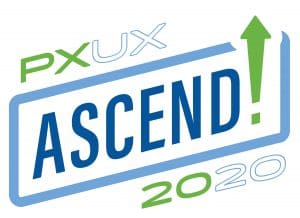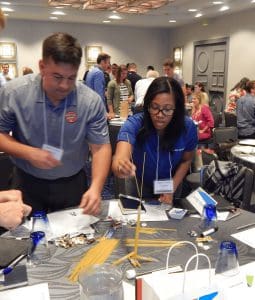2 min read
Fourth Visit’s the Charm: How to Create Loyal Customers
Before digital loyalty programs, restaurants had no real way of figuring out which visitors were likely to return. And, what’s worse, they had no way...
Platform
What is Paytronix Guest Engagement Suite?
Combining online ordering, loyalty, omnichannel messaging, AI insights, and payments in one suite. Paytronix delivers relevant, personal experiences, at scale, that help improve your entire digital marketing funnel by creating amazing frictionless experiences.
A Complete Guest Engagement Suite
Online Ordering
Acquire new customers and capture valuable data with industry leading customization features.
Loyalty
Encourage more visits and higher spend with personalized promotions based on individual activity and preferences.
Catering
Grow your revenue, streamline operations, and expand your audience with a suite of catering tools.
CRM
Build great customer relationships with relevant personal omnichannel campaigns delivered at scale.
Artificial Intelligence
Leverage the most data from the most customer transactions to power 1:1 marketing campaigns and drive revenue.
Payments
Drive brand engagement by providing fast, frictionless guest payments.
Solutions
Paytronix Guest Engagement Solutions
We use data, customer experience expertise, and technology to solve everyday restaurant and convenience store challenges.
FlightPaths are structured Paytronix software onboarding journeys designed to simplify implementation and deliver maximum ROI.
Customer Success Plans (CSPs) are tiered service offerings designed to help you get the most from your Paytronix software, whether you prefer self-guided support or hands-on partnership.
Contactless Experiences
Accommodate your guests' changing preferences by providing safe, efficient service whether dining-in or taking out.
Customer Insights
Collect guest data and analyze behaviors to develop powerful targeted campaigns that produce amazing results.
Marketing Automation
Create and test campaigns across channels and segments to drive loyalty, incremental visits, and additional revenue.
Mobile Experiences
Provide convenient access to your brand, menus and loyalty program to drive retention with a branded or custom app.
Subscriptions
Create a frictionless, fun way to reward your most loyal customers for frequent visits and purchases while normalizing revenues.
Employee Dining
Attract and retain your employees with dollar value or percentage-based incentives and tiered benefits.
Order Experience Builder
Create powerful interactive, and appealing online menus that attract and acquire new customers simply and easily.
Loyalty Programs
High-impact customizable programs that increase spend, visit, and engagement with your brand.
Online Ordering
Maximize first-party digital sales with an exceptional guest experience.
Integrations
Launch your programs with more than 450 existing integrations.
Loyalty Programs
Deliver the same care you do in person with all your digital engagements.
Online Ordering
Drive more first-party orders and make it easy for your crew.
Loyalty Programs
Digital transformations start here - get to know your guests.
Online Ordering
Add a whole new sales channel to grow your business - digital ordering is in your future.
Integrations
We work with your environment - check it out
Tobacco Reporting
Comply with AGDC 2026 DTP Requirements
Company
We are here to help clients build their businesses by delivering amazing experiences for their guests.
Meet The Team
Our exceptional customer engagement innovations are delivered by a team of extraordinary people.
News/Press
A collection of press and media about our innovations, customers, and people.
Events
A schedule of upcoming tradeshows, conferences, and events that we will participate in.
Careers
Support
Paytronix Login
Order & Delivery Login
Resources
Paytronix Resources
Learn how to create great customer experiences with our free eBooks, webinars, articles, case studies, and customer interviews.
FlexPoint Service Catalog
Access FlexPoints are a cost-effective, flexible way to access our value-added services, to ensure you get greater impact from your Access software solution.
See Our Product In Action
E-Books
Learn more about topics important to the restaurant and c-store customer experience.
Reports
See how your brand stacks up against industry benchmarks, analysis, and research.
Blog
Catch up with our team of in-house experts for quick articles to help your business.
Case Studies
Learn how brands have used the Paytronix platform to increase revenue and engage with guests.
Unlock loyalty strategies that 3 out of 4 restaurants use to boost engagement by 40% without adding staff.
2 min read
Jan 09, 2018

The convenience store industry is going through a transformation where retailers are becoming competitors in the foodservice space, but there is still a lot that c-stores can learn from restaurants when it comes to customer engagement. By learning more about their customers and leveraging the data, c-stores can build loyalty and earn increased visits and spend from their customers.
How can c-stores achieve the level of customer engagement that restaurants have been able to get? There is a shift in the way brands think about their marketing, moving from category-centric to customer-centric, meaning instead of thinking about how to sell more of a product you think about who is buying those products. A customer-centric approach still revolves around selling more products, but it also means delving into who is buying them and why.
To move to a customer-centric approach, c-store marketers need to think about three main things:
For instance, Thorntons Inc. utilizes a multi-channel enrollment method that includes a card, mobile app, and responsive web pages that are easily accessed from any device. By using multiple channels, the company was able to enroll one million customers within the first year, creating the desired incremental sales and contributing to the program’s profitability.
By employing the customer engagement methods that restaurants have practiced and refined over the years convenience stores are poised to generate increased loyalty and spend from their customers. This topic was recently discussed at length during the webinar “What Can Convenience Stores Learn from Restaurants about Guest Engagement”, view this on demand to learn more.

2 min read
Before digital loyalty programs, restaurants had no real way of figuring out which visitors were likely to return. And, what’s worse, they had no way...

6 min read
This year’s Paytronix User’s Conference was unconventional, to say the least; but thanks to our incredible clients, the first-ever virtual PXUX was...

2 min read
On August 24th & 25th Boston was the nexus of leading insights on guest engagement as Paytronix hosted its second annual Paytronix User Experience...